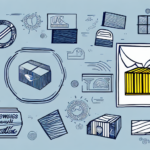How to Prepare International Dangerous Goods for UPS Express Freight Shipping
Shipping dangerous goods is a complex and challenging process that requires meticulous adherence to international regulations to ensure the safe transportation of hazardous materials. This comprehensive guide provides detailed steps on how to prepare international dangerous goods for UPS Express Freight Shipping, incorporating the latest regulations and industry best practices.
Understanding International Dangerous Goods Regulations
Before preparing hazardous materials for UPS Express Freight Shipping, it's essential to understand the international regulations governing dangerous goods transportation. The two primary sets of regulations are the International Air Transport Association (IATA) Dangerous Goods Regulations and the International Maritime Dangerous Goods (IMDG) Code.
These regulations classify hazardous materials based on their potential risk to human health and safety, physical properties, and environmental impact. Understanding these classifications is critical for identifying and properly preparing dangerous goods for shipping.
It's important to note that different countries may have their own specific regulations and requirements for the transportation of dangerous goods. Shippers are responsible for ensuring compliance with all applicable regulations to avoid legal issues and ensure the safety of the shipment.
Proper labeling and packaging are also paramount. This includes using the correct labels, markings, and packaging materials to facilitate the safe transportation of hazardous materials.
Identifying Hazardous Materials for Shipping
The first step in preparing international dangerous goods for UPS Express Freight Shipping is identifying the hazardous materials involved. Common examples include chemicals, batteries, and compressed gases.
Accurate identification requires a thorough evaluation of each material's physical and chemical properties. This evaluation determines the necessary precautions, packaging, and labeling requirements during shipping.
Not all hazardous materials are immediately obvious. Some substances may not be explicitly labeled as hazardous but can still pose significant risks during transportation. Consulting with a hazardous materials expert can help ensure all materials are correctly identified and handled.
Additionally, regulations regarding hazardous materials can vary by country. It is crucial to research and comply with the regulations of both the country of origin and the destination country to prevent legal issues or shipping delays.
Categories of Hazardous Materials
Hazardous materials are categorized into nine classes based on the type of hazard they present. Understanding these categories is essential for proper handling and shipping:
- Class 1: Explosives
- Class 2: Gases
- Class 3: Flammable Liquids
- Class 4: Flammable Solids; Substances Liable to Spontaneous Combustion; Substances Which, on Contact with Water, Emit Flammable Gases
- Class 5: Oxidizing Substances and Organic Peroxides
- Class 6: Toxic and Infectious Substances
- Class 7: Radioactive Materials
- Class 8: Corrosives
- Class 9: Miscellaneous Dangerous Goods
Each category carries unique risks. For example, explosives can cause immediate harm through their explosive force, while toxic substances can lead to long-term health issues upon exposure.
Proper labeling and handling procedures must be followed for each category to ensure the safety of all personnel involved and to prevent environmental contamination.
UPS Express Freight Shipping Requirements for Dangerous Goods
UPS Express Freight Shipping enforces strict requirements for shipping hazardous materials, aligning with international regulations to ensure safety and compliance. Non-compliance can result in substantial fines and penalties.
Key requirements include:
- Proper Classification: Accurate classification of the hazardous material according to international standards.
- Specialized Packaging: Using appropriate packaging materials that meet regulatory standards.
- Labeling: Clearly labeling all packages with the appropriate hazard labels and markings.
- Documentation: Providing complete and accurate shipping documentation, including safety data sheets and emergency response information.
Additionally, UPS Express Freight Shipping may have specific restrictions on certain types of dangerous goods, such as certain explosives, radioactive materials, and infectious substances. Shippers must verify that their shipments comply with these restrictions to avoid rejection or delays.
Preparing Hazardous Materials for UPS Express Freight Shipping
Preparing hazardous materials for UPS Express Freight Shipping requires specialized knowledge and training. Only trained and qualified personnel should handle the preparation to ensure compliance with regulations and to minimize risks.
The preparation process involves several critical steps:
- Correct Classification: Classify each material accurately using the IATA and IMDG guidelines.
- Appropriate Packaging: Select packaging that is suitable for the material's hazards and compliant with regulations. For instance, liquids should be in leak-proof containers, while gases require containers capable of withstanding high pressure.
- Labeling: Apply the correct hazard labels and markings to each package to convey essential safety information.
- Documentation: Complete all necessary shipping papers, including details about the material's name, quantity, hazard class, and emergency response information.
Ensuring that the packaging is robust enough to withstand transportation conditions—such as vibration, shock, and temperature variations—is essential to prevent accidents during transit.
Packaging and Labeling Hazardous Materials for Safe Transportation
Proper packaging and labeling are foundational to the safe transportation of hazardous materials. Each package must be designed to prevent leaks, spills, and accidental exposure during transit.
Key considerations include:
- Packaging According to Class: Ensure that the packaging meets the specific requirements for the material's hazard class. For example, flammable liquids need heat-resistant containers, while corrosive materials require corrosion-resistant packaging.
- Use of Certified Packaging: Utilize UN-certified packaging when necessary, which has been tested and approved to meet international safety standards.
- Clear Labeling: Affix the appropriate hazard labels, handling instructions, and emergency contact information prominently on all packages. Labels should be visible and securely attached to prevent detachment during handling.
Failure to properly package and label hazardous materials can lead to severe consequences, including legal penalties, environmental damage, and risks to human health and safety.
Furthermore, all personnel involved in handling these materials must be adequately trained and equipped with the necessary personal protective equipment (PPE), such as gloves and goggles. Training should cover proper handling techniques and emergency response procedures to mitigate potential risks.
Essential Safety Guidelines for Handling Dangerous Goods
Adhering to safety guidelines is crucial to protect personnel and ensure compliance when handling dangerous goods. These guidelines include:
- Personal Protective Equipment (PPE): Always wear appropriate PPE, such as gloves, goggles, and protective clothing, to prevent exposure to hazardous materials.
- Avoiding Unnecessary Exposure: Limit handling of hazardous materials to essential personnel only and minimize the duration of exposure.
- Securing and Isolating Materials: Ensure that hazardous materials are properly secured and isolated during transportation to prevent movement or accidental release.
- Emergency Response Training: Train handlers in proper emergency response procedures to effectively address spills, leaks, or other incidents.
Regular inspections and maintenance of equipment used for handling dangerous goods are also essential to ensure they remain in good working condition and do not pose additional risks.
Staying informed about updates to regulations and best practices is vital. Regularly review regulatory changes and incorporate them into handling and shipping procedures to maintain compliance and enhance safety.
How to Ensure Compliance with International Regulations
Compliance with international regulations is non-negotiable when preparing hazardous materials for UPS Express Freight Shipping. To ensure compliance:
- Specialized Training: Provide comprehensive training for all personnel involved in handling and shipping hazardous materials. Training should cover classification, packaging, labeling, and emergency response procedures.
- Accurate Documentation: Maintain precise and complete documentation for all shipments, including safety data sheets, shipping papers, and emergency response information.
- Regular Audits: Conduct periodic audits of packing and shipping processes to identify and rectify compliance gaps.
- Stay Informed: Keep abreast of changes in international regulations and update procedures accordingly.
Different countries may have varying regulations and requirements for the transportation of hazardous materials. It's crucial to research and understand the specific regulations for each country involved in the shipping process to ensure full compliance. Non-compliance can result in fines, shipping delays, and potential harm to individuals and the environment.
Common Mistakes to Avoid When Shipping Dangerous Goods with UPS
Shipping dangerous goods with UPS can be highly efficient when done correctly. However, there are common mistakes that can jeopardize safety and compliance:
- Improper Classification: Misclassifying hazardous materials can lead to incorrect handling, packaging, and shipping, increasing the risk of accidents.
- Incorrect Packaging: Using inappropriate or non-certified packaging can result in leaks, spills, and regulatory violations.
- Labeling Errors: Failure to affix the correct hazard labels can obscure the dangers of the materials, leading to mishandling.
- Incomplete Documentation: Providing inaccurate or incomplete shipping documentation can cause delays, rejections, or legal issues.
- Lack of Training: Insufficient training for personnel handling dangerous goods can result in unsafe handling practices and increased risk of accidents.
To avoid these mistakes:
- Ensure accurate classification of all hazardous materials.
- Use certified and appropriate packaging for each type of hazardous material.
- Apply correct and visible labeling on all packages.
- Complete all required documentation meticulously.
- Provide comprehensive training for all personnel involved in the shipping process.
By diligently following these guidelines, shippers can minimize risks and ensure the safe and compliant transportation of hazardous materials with UPS Express Freight Shipping.
One of the most critical aspects of shipping dangerous goods is ensuring the use of correct and certified packaging. This includes selecting the appropriate type of packaging, such as UN-certified packaging, and verifying that it is in good condition. Proper packaging prevents leaks, spills, and other hazards during transport.
Another frequent mistake is the failure to properly document the shipment. Accurate documentation must include detailed information about the shipment's contents, quantities, and any necessary permits or licenses. Incomplete or inaccurate documentation can lead to shipment delays, rejection, additional costs, and potential safety hazards.






















